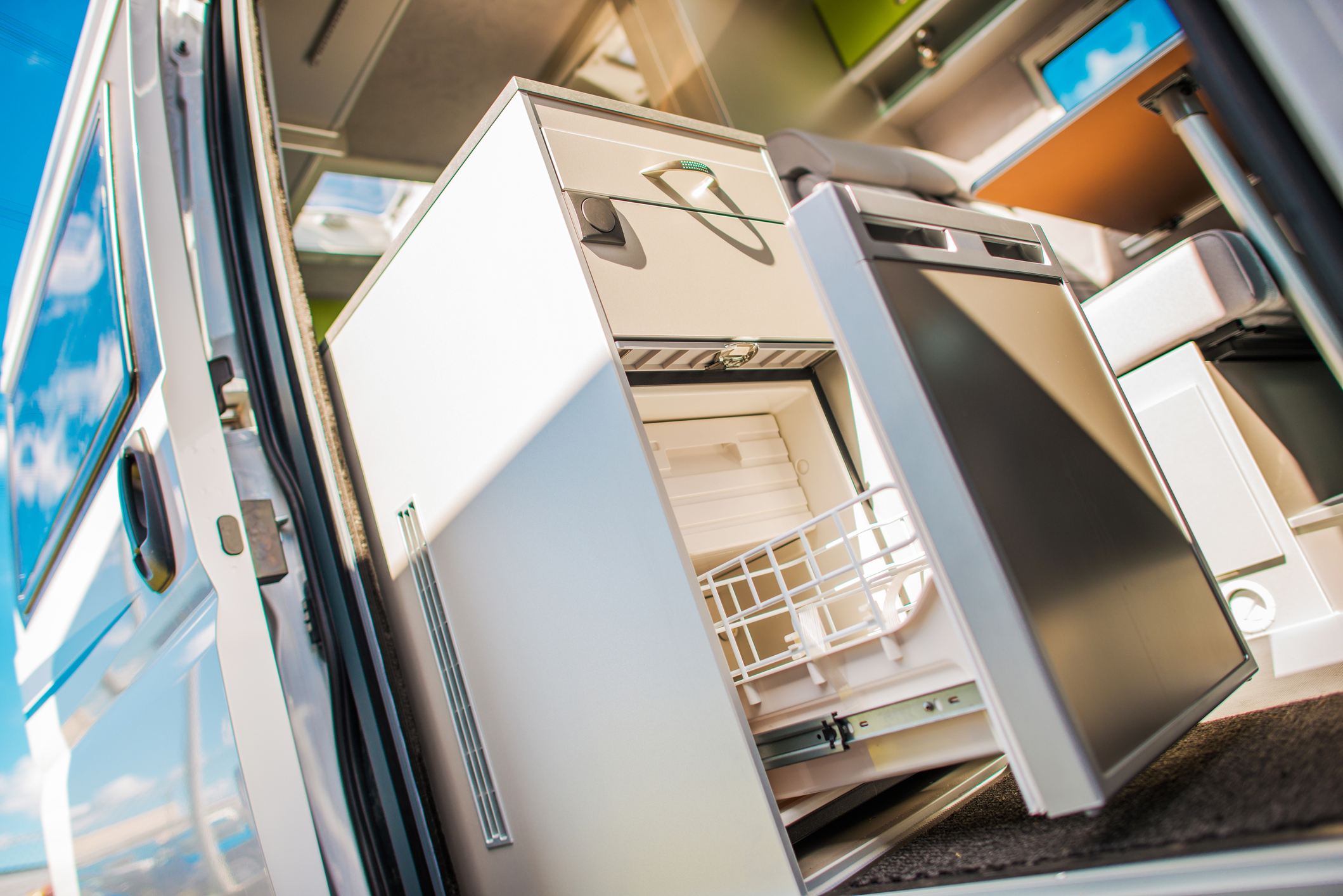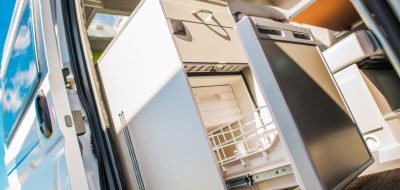Keep your RV fridge cool with these handy tips.
Ready for RV travel during the summer? One of the most important appliances during this time of year is your fridge, which keeps food cool for those barbecues at camp and chills beverages for those refreshing drinks on the go. Below you’ll find some handy tips on keeping this workhorse functioning smoothly, but first, it’s important to understand some fridge fundamentals.
Stone Cold Facts: A Fridge Primer
Traditional RV refrigerators operate using absorption technology. This requires a heat source as the driving energy. The heat can be powered by liquid propane gas, 12-volt DC house batteries or 120-volt AC shore power. These units are appropriately called “3-Way Refrigerators,” and they’re generally found in all trailers and most motorhomes. Why is this important? The 3-way — or 2-way (LPG/120-vac) — RV refrigerator is the ideal choice for the occasional boondocking and “off-the-grid” camping.
On the other hand, all-electric refrigerators, the same as those used in homes, are growing in popularity in RVs. These utilize electric motors to drive compressors and are powered strictly by a 120-volt AC source. In the past, these really were not practical for most mobile applications, given their high power consumption. But thanks to major energy-reduction advancements in the industry, the power consumption has been reduced by over 75 percent. But because the only power source is a 120-volt household current, an electrical inverter is required to harness the house-battery power when the RV isn’t connected to shore power. The inverter will change the 12-volt DC power of the house batteries to the needed 120-volt AC juice.
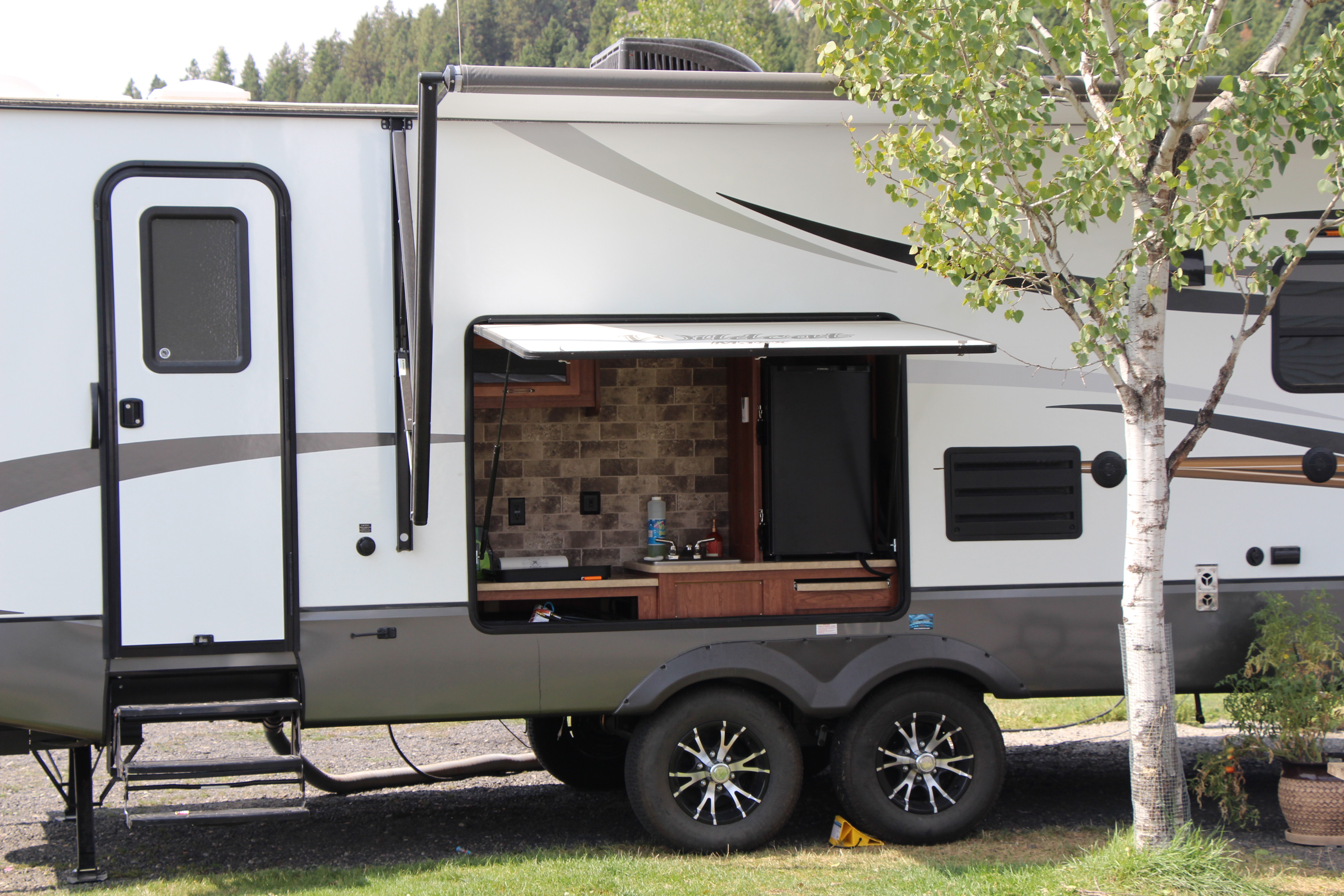
At camp, try to position the fridge-side of your RV under shade. Photo: Peter Mercer
Keeping Cool Under Pressure
The RV refrigerator faces some challenges that don’t affect the traditional home refrigerator.
Exterior heat. The summer sun increases the temperature on the RV exterior, and this, in turn, raises the demand on the cooling circuit. In addition, the cooling process needs to output heat from the condenser, and that gets impeded during blazing summer days. All this adds up to reduced efficiency of the fridge.
Leveling: RV absorption refrigerators require being relatively level. Failure to meet this requirement may cause a loss of efficiency and total breakdown over time.
So here are 12 tips for optimal fridge function:
1) Level Your RV For Fridge Operation
Always make sure your RV is fairly level for the best fridge performance. This where your RV leveling system plays a crucial role. The good news is that you don’t have to be perfect. Some manufacturers say that today’s refrigerators operate well within 3 degrees off level side-to-side and 6 degrees off level front-to-back.
2) Maintain Air Flow From Unit to Exterior
Make sure the upper vent outlet has a clean airflow to allow heat to escape from the top-rear of the fridge. Check to see if there is a vent fan in this area. If so, confirm that it operates. If there is no fan, consider installing one. The Camping World service department can install a unit to vastly improve the air movement, should it be required.
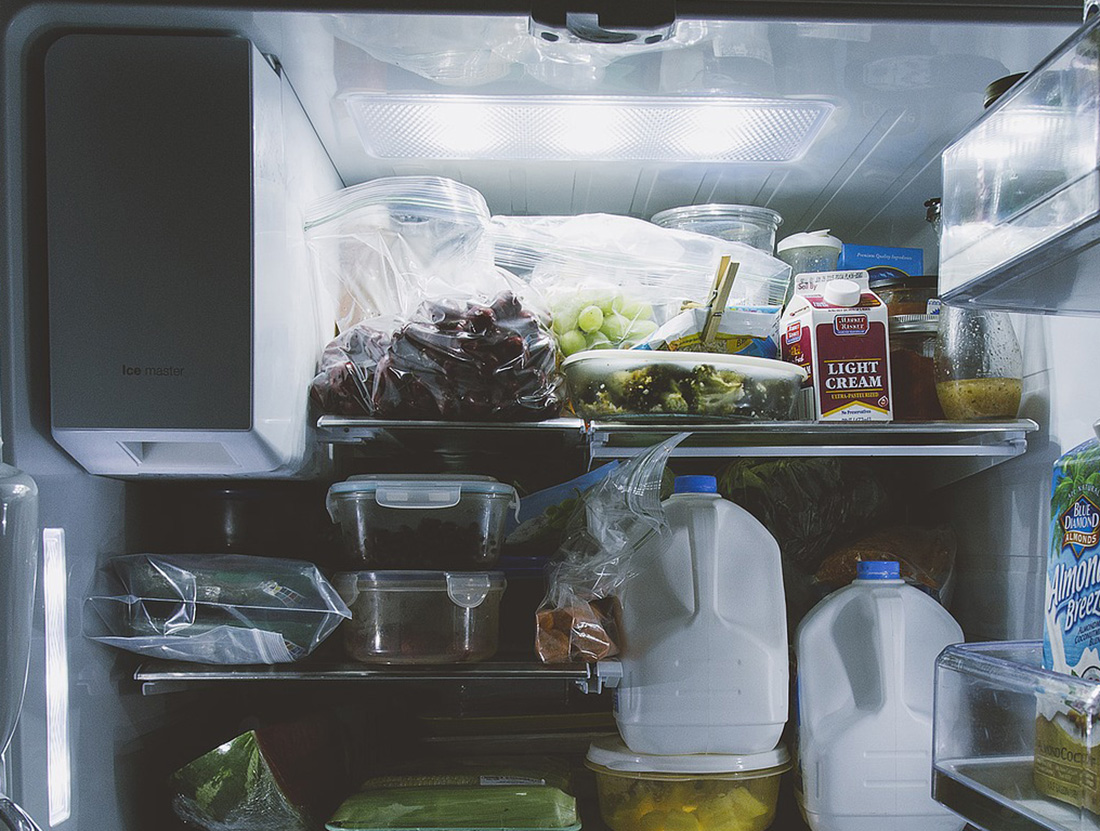
Limit the amount of time that doors are open. Photo: Pexels
3) Turn On the Fridge 24-Hours Before Leaving
Turn the refrigerator on the day before you need it. That will allow it to cool fully. Then stock your shelves well. A full fridge holds the cold temperatures better than one that is empty.
4) Do Not Shelf-Shop
Standing and browsing the contents of an open fridge for a long time wastes energy. Limit the amount of time that your fridge’s doors are open. Always decide what you want first so that you can get what you need. Keep an organized fridge so that you know where everything is located.
5) Shade the Fridge Side of The RV
On sunny sweltering days, the fridge must work overtime to maintain its cool. Shading the outside of the rig where the refrigerator is located will help it in that regard. Knowing where the fridge is from the outside is easy, as there are two removable vents located there. Always try to reserve a spot where shade is available. Extending an awning, if installed on that side, also lowers the temperature.
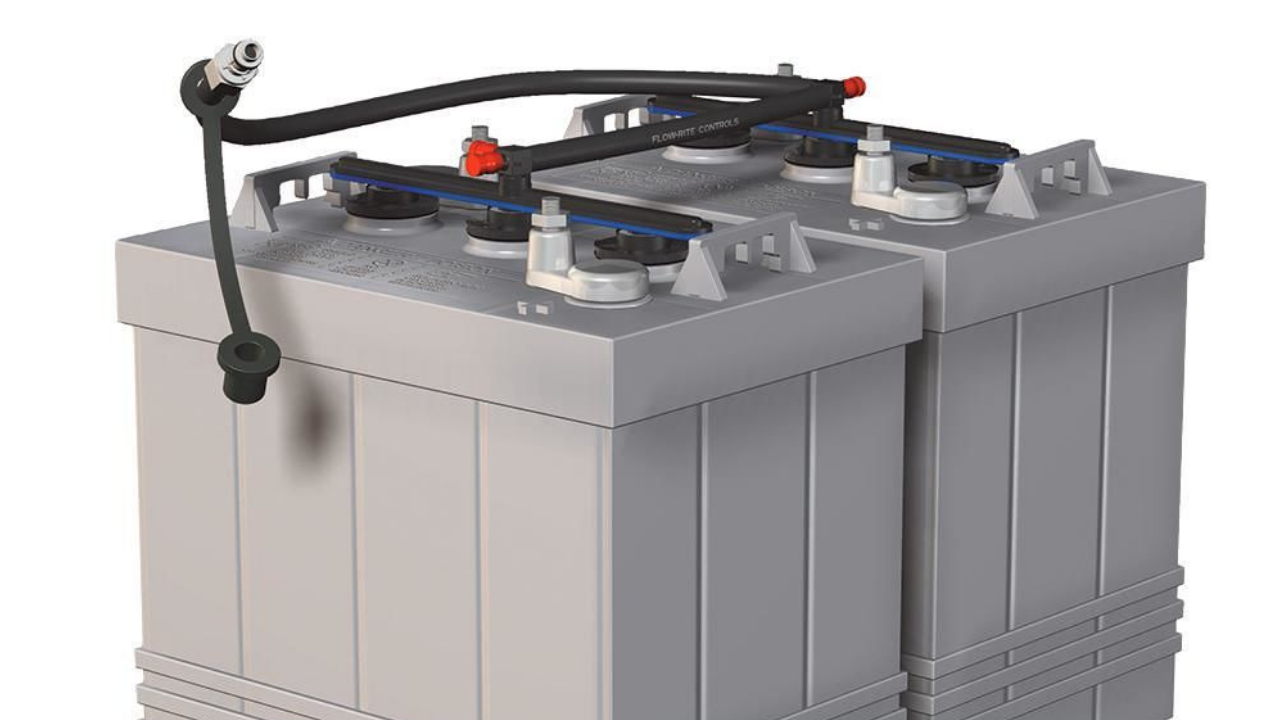
Maintain the charge of your house batteries to ensure that your fridge operates well.
6) Maintain 12-Volt House Power
Whether you’re dry camping or hooked to shore power, you should always make sure your house batteries are charged. The fridge relies on this power source to operate the control module. Always check to make sure the house battery bank is charged at a sufficient level. Even when your RV is using shore power, you should make sure sure the AC battery charger is keeping the house batteries well charged.
7) Load or Restock With Cold Product
When buying soda, beer and like products, always get the already-cooled items from the coolers, not from the store shelves. This will prevent the fridge from straining to reduce the liquid’s warm temperatures. Additionally, the stocking of cold beverages will actually aid in the maintaining of the fridge’s desired temperature.
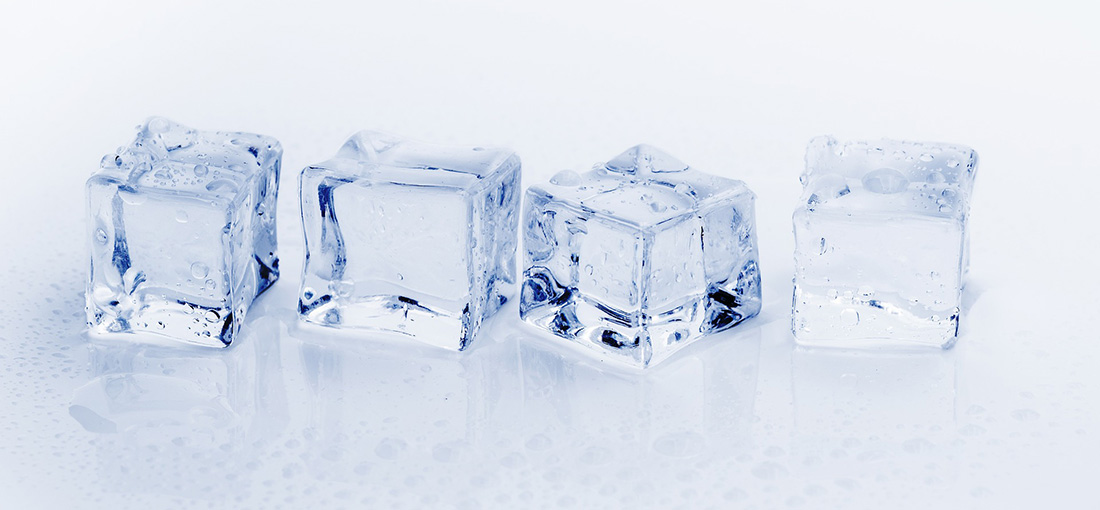
Photo: Bru-nO
8) Purchase Ice As Needed
Avoid subjecting the refrigerator to ice production on hot days. Instead, purchase any ice that you may require. Check with your campground to see if ice is sold, or plan to make a run to a nearby market. By avoiding this draining task, your fridge will benefit in the long run.
9) Monitor the Fridge Temperature
Buy an inexpensive remote temperature gauge. Place the sensor on one of the shelves in the rear of the fridge. Keep the readout monitor in the galley area. Now you can monitor your refrigerator’s health without the need to open the door. In time, you will learn the baseline performance of this appliance, allowing you to take appropriate measures of correction prior to a major issue.
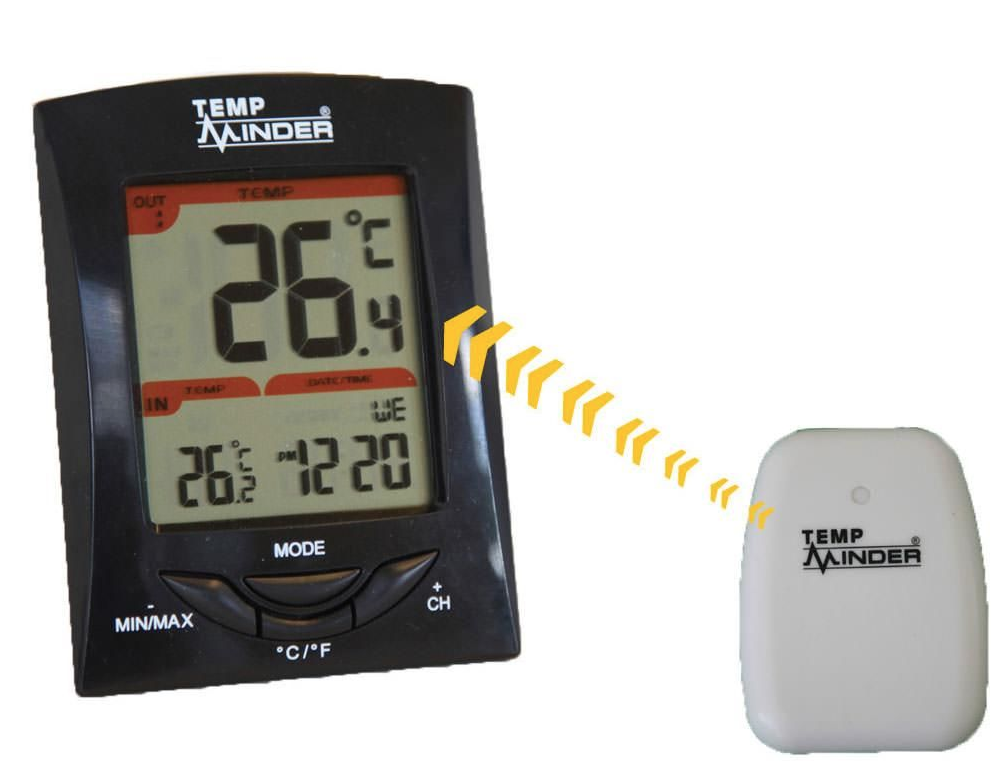
TempMinder Three-Station Wireless Thermometer and Clock. Photo: Camping World
10) Refrigerate Cooled Left-Overs
Do not put dinner left-overs into the fridge until they have sat and cooled to room temperature. Not adhering to this will have negative short-term effects on refrigerator efficiency.
11) Defrost the Refrigerator Regularly
Defrost the unit whenever there is an ice build-up in and around the freezer section. The cooling coils must be able to radiate their cold temperatures to be efficient. Ice build-up can also hinder proper door sealing.
12) Check the Door Seal
Inspect the door seal for a tight, uniform fit. Any air leak will cause possible ice accumulation within the unit and reduce its overall efficiency. Have the seal replaced if any damage or excess wear is present.
Well, these are just some of the actions you may want to do to combat the hot summer temperatures and enjoy your cold beverages.
Peter Mercer — With a Cool Thought

